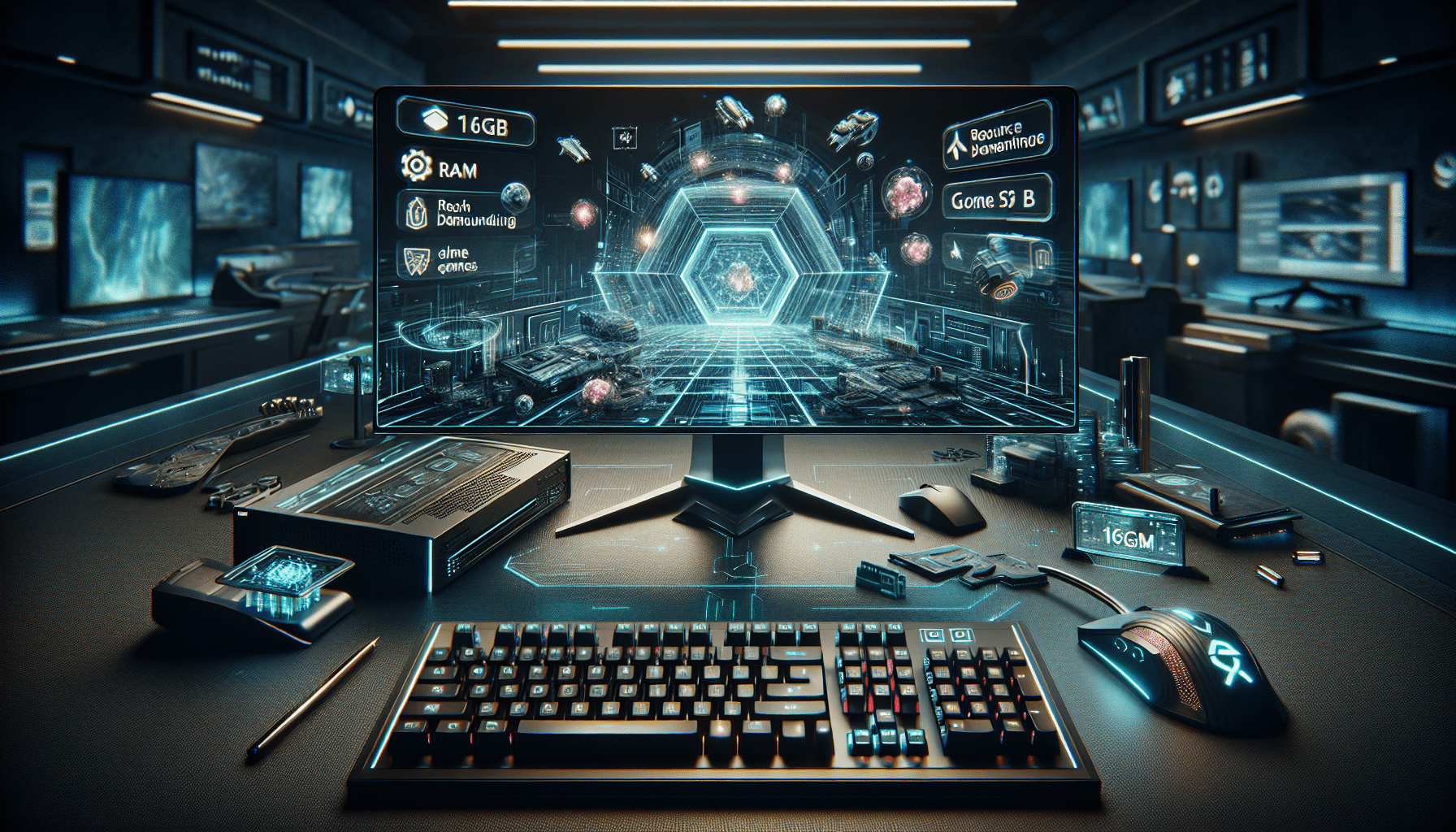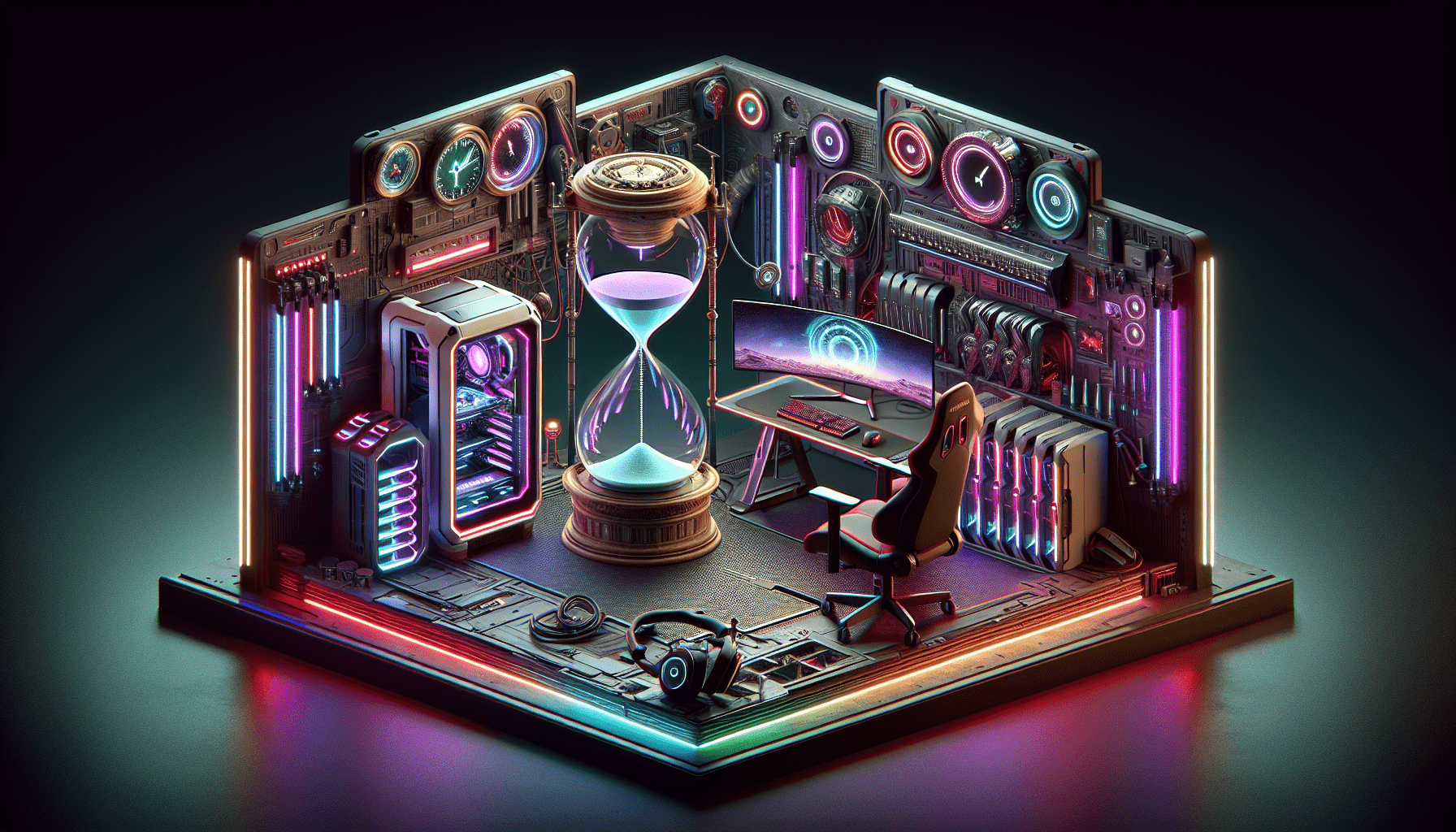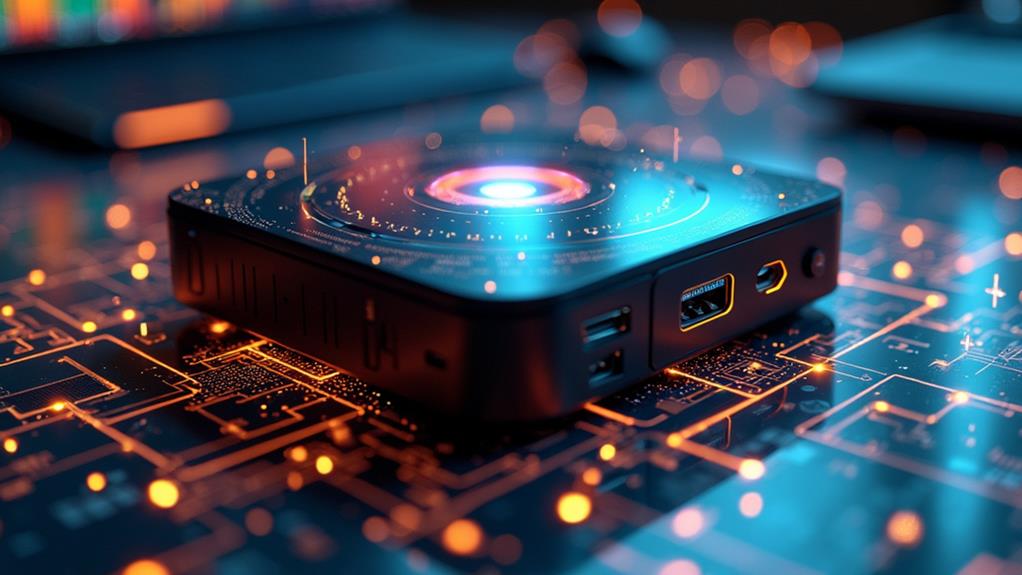



Imagine yourself in the exciting world of gaming in 2023. As you immerse yourself in vivid virtual landscapes and engage in intense battles, the question arises: is 16GB RAM enough to deliver the exceptional gaming experience you crave? In a realm where technological advancements constantly push boundaries, it’s essential to understand if this amount of RAM can keep up with the demands of the gaming landscape. So, let’s embark on a journey to explore the present and future of gaming, and find out if 16GB RAM will suffice in 2023.
The Importance of RAM for Gaming
How RAM affects gaming performance
When it comes to gaming, RAM (Random Access Memory) plays a crucial role in determining the overall performance and experience. RAM directly affects the speed and efficiency of your gaming system by providing quick access to data and instructions that the CPU (Central Processing Unit) needs to process. In simple terms, the more RAM you have, the faster and smoother your games will run.
RAM acts as a temporary storage space where your computer stores data that is actively being used by the CPU. This data includes game files, textures, and other assets that need to be loaded and processed in real-time. Insufficient RAM can lead to slower loading times, lag, and even crashes during gameplay. Therefore, having an adequate amount of RAM is essential for a seamless gaming experience.
Minimum RAM requirements for modern games
As technology advances and game developers push the boundaries of graphic fidelity and immersion, the minimum RAM requirements for modern games continue to rise. In recent years, the typical minimum RAM requirement for many AAA (triple-A) titles has been 8GB. However, it is important to note that meeting the minimum requirements may not always guarantee a smooth gaming experience, especially for more demanding titles.
To truly ensure optimal performance and future-proof your gaming setup, a minimum of 16GB of RAM is often recommended. This allows for better multitasking capabilities, reduced loading times, and the ability to handle resource-intensive games without any hiccups.
The role of RAM in game loading times
Game loading times can be a major frustration for gamers. Waiting for a game to load can break the immersion and hinder the overall experience. RAM plays a vital role in reducing loading times by providing quick access to data that needs to be read and processed by the CPU.
With sufficient RAM, your computer can store a larger portion of the game in its memory, allowing for faster retrieval and processing of the required assets. This means shorter loading screens and quicker transitions between different areas or levels within a game. As a result, you can start playing your favorite games much faster and spend less time waiting around.
Trends in Gaming RAM Requirements
Increasing RAM demands in recent years
Over the past few years, there has been a steady increase in the RAM demands of modern games. This can be attributed to advancements in graphics technology, the rise of open-world games, and the use of complex physics engines. These factors, among others, contribute to the need for more RAM to ensure smooth gameplay experiences.
With games becoming more visually stunning and immersive, developers are designing games to take advantage of the hardware capabilities available to players. This includes utilizing higher resolution textures, detailed character models, realistic lighting, and special effects that require more RAM to be stored and processed efficiently.
Expected trend for RAM requirements in 2023
Looking ahead to 2023, it is safe to assume that the trend of increasing RAM demands will continue. As new technologies, such as ray tracing and virtual reality, become more prevalent in gaming, the need for additional RAM will become even more apparent. These advancements in technology will undoubtedly bring about games with even more detailed and lifelike graphics, further pushing the boundaries of what hardware can handle.
To ensure a smooth gaming experience in the future, it is highly recommended to invest in sufficient RAM capacity, such as 16GB, to meet the growing demands of upcoming games.

The Benefits of 16GB RAM for Gaming
Smooth gameplay experience
One of the primary benefits of having 16GB of RAM for gaming is the ability to enjoy a smooth gameplay experience. With this amount of RAM, your system can handle demanding games without struggling to load assets or having to constantly fetch data from slower storage mediums. It allows for more RAM to be dedicated to storing and accessing game files, resulting in faster rendering, fewer frame drops, and overall improved performance.
Whether you are exploring vast open-world environments, engaging in intense multiplayer battles, or immersing yourself in captivating story-driven campaigns, having 16GB of RAM ensures that your gaming experience remains uninterrupted and highly enjoyable.
Compatibility with current games
While 8GB of RAM might be sufficient for some current games, there are already titles that recommend or require 16GB for optimal performance. By having 16GB of RAM, you can ensure compatibility with a wider range of games, both present and future.
Moreover, certain games, especially those with large modding communities, can benefit from additional RAM. Mods often add more detailed textures, additional assets, and enhanced features that can put a strain on system resources. With 16GB of RAM, you can easily accommodate these modifications and experience games in all their glory.
Economical choice for most gamers
When considering the cost-to-performance ratio, 16GB of RAM is often the most economical choice for most gamers. While it is true that higher capacity RAM kits are available, they tend to have diminishing returns for gaming. The performance gains beyond 16GB are typically minimal and may not be noticeable in most gaming scenarios.
By opting for 16GB of RAM, you can allocate your budget towards other important components of your gaming system, such as a faster CPU or a more powerful graphics card. This allows you to maximize the overall gaming experience without breaking the bank.
Factors to Consider for Gaming RAM
System requirements of specific games
When determining the amount of RAM required for gaming, it is essential to consider the specific system requirements of the games you wish to play. Some games may have higher RAM requirements than others due to their complexity or the use of advanced graphical features.
Checking the recommended system requirements of the games you are interested in will give you a good indication of the amount of RAM needed to achieve optimal performance. It is always advisable to go slightly above the minimum requirements to ensure a smooth gaming experience, especially for future games that may demand more resources.
Multitasking and background processes
In addition to gaming, modern-day computer users often engage in multitasking activities, such as streaming, video editing, or running multiple applications simultaneously. These tasks can place a significant strain on your system’s resources, including RAM.
If you tend to have multiple applications running in the background while gaming, or if you frequently switch between tasks, it is advisable to have more RAM to accommodate the additional workload. This will ensure that your system can handle all the tasks without experiencing slowdowns or performance issues.
Future-proofing your gaming setup
Future-proofing your gaming setup is an essential consideration when choosing the amount of RAM for your system. By investing in 16GB of RAM now, you can ensure that your gaming rig remains capable of handling demanding games that are released in the coming years.
While it is impossible to predict future technology advancements and the exact RAM requirements of future games, having a higher capacity of RAM provides a level of flexibility and readiness for whatever the future may bring. It is always better to have more than less when it comes to RAM, as it is a crucial component in delivering a smooth and enjoyable gaming experience.

Alternatives to 16GB RAM
32GB RAM for demanding games
For gamers who engage in highly demanding tasks or plan to future-proof their system even further, upgrading to 32GB of RAM can be a viable alternative. This additional amount of RAM ensures that your system has ample resources to handle even the most demanding games with ease.
Furthermore, 32GB of RAM allows for greater multitasking capabilities, making it ideal for gamers who wish to run resource-intensive applications alongside their gaming sessions. However, it is important to note that the benefits of 32GB over 16GB might not be fully realized in most gaming scenarios, unless the specific software or tasks being performed significantly benefit from the extra capacity.
Customizable RAM options
In recent years, RAM manufacturers have introduced customizable options that allow users to tweak the speed, timings, and capacities of their RAM modules. This provides the opportunity to tailor your RAM configuration to best suit your gaming needs.
Customizable RAM options allow for greater flexibility, as you can choose the exact capacity of RAM you require rather than being limited to predefined capacities. However, it is important to note that fine-tuning RAM requires some knowledge and tinkering, so it may not be ideal for novice users.
Upgrading vs. building a new system
When considering alternatives to 16GB RAM, another option to explore is upgrading your existing system or building a new one altogether. While upgrading the RAM in your current system may be a cost-effective solution, it is crucial to ensure compatibility with your motherboard and other components.
Building a new system from scratch allows you to choose the exact amount and type of RAM you need, without any limitations. This provides greater flexibility and ensures that your system is optimized for your gaming requirements. However, building a new system can be a more expensive and time-consuming process compared to a simple RAM upgrade.
Overcoming RAM Limitations
Optimizing game settings and resource usage
If you find yourself running into RAM limitations while gaming, there are several steps you can take to optimize your game settings and resource usage. Lowering graphics settings, reducing the draw distance, or disabling certain features, such as anti-aliasing or shadows, can significantly reduce the strain on your system’s memory.
Additionally, closing unnecessary applications or background processes can free up valuable RAM resources. This includes stopping any resource-intensive programs, such as web browsers or video editing software, that may be running in the background and consuming system memory.
Using memory management tools
There are various memory management tools available that can help optimize your system’s RAM usage. These tools monitor the usage of RAM and help prioritize resources, ensuring that the most critical processes have access to the necessary memory.
Memory management tools can also help clear out any unnecessary cached data or temporarily stored files, freeing up additional RAM for your gaming sessions. However, it is important to choose reliable and reputable tools to avoid potential compatibility issues or system instability.
Potential trade-offs and compromises
While overcoming RAM limitations is possible through optimization and resource management, it is important to acknowledge that there may be trade-offs and compromises involved. Lowering graphics settings or disabling certain features can impact the visual quality of the game, potentially compromising the overall gaming experience.
Additionally, using memory management tools or closing background processes may temporarily improve RAM availability but can result in slower multitasking or reduced system responsiveness. As such, it is essential to strike a balance between adequate RAM capacity and the desired gaming experience.
Implications of 16GB RAM for Future Gaming
Increasing demands on system resources
As technology continues to advance, the demands on system resources, including RAM, are expected to increase. Future games will likely incorporate more demanding graphics, complex physics simulations, and advanced AI systems. These aspects will require additional RAM to store and process the necessary data, ensuring smooth and immersive gameplay.
Having 16GB of RAM can provide a reasonable level of future-proofing for gaming, as it offers a balance between performance and cost-effectiveness. However, with the rapid evolution of technology, it is important to keep an eye on future developments and potential increases in RAM requirements.
The impact of new technologies
The introduction of new technologies, such as ray tracing and virtual reality, will undoubtedly impact RAM requirements for gaming. Ray tracing, in particular, places a heavy strain on system resources due to the complex calculations involved in simulating accurate lighting effects. The use of virtual reality also demands additional processing power and memory to ensure an immersive experience.
To fully embrace these new technologies and maintain optimal performance, gamers may need to consider upgrading their RAM beyond the 16GB mark. This will allow for seamless integration of these cutting-edge features and prevent any performance bottlenecks.
The potential need for RAM upgrades
Ultimately, the future of gaming will likely necessitate RAM upgrades for those seeking to stay on the cutting edge. While it is difficult to predict exact RAM requirements, it is reasonable to assume that the demand for larger amounts of RAM will continue to grow.
By investing in a system with 16GB of RAM now, gamers can delay the need for an immediate upgrade and ensure a smooth gaming experience for the foreseeable future. However, staying up to date with industry trends and advancements will help in determining the right time to consider a RAM upgrade.
Other Hardware Considerations
The role of CPU and GPU in gaming
While RAM is vital for gaming performance, it is important to consider that it does not operate in isolation. The CPU and GPU (Graphics Processing Unit) are equally essential components that work in conjunction with RAM to deliver a smooth gaming experience.
The CPU handles the majority of the processing tasks in a gaming system, while the GPU is responsible for rendering graphics and visual effects. Each of these components plays a critical role in determining overall gaming performance, and a balance must be struck to create a well-rounded gaming system.
A powerful CPU and GPU combination, paired with adequate RAM capacity, ensures that the various aspects of your gaming experience, from AI interactions to visual fidelity, run optimally.
Effects of storage type and speed
While RAM is responsible for providing quick access to data during gameplay, the type and speed of storage used in a gaming system can also impact overall performance. Choosing the right storage solution, such as solid-state drives (SSDs), can significantly reduce loading times and improve the responsiveness of your system.
SSDs have faster read and write speeds compared to traditional hard disk drives (HDDs), allowing for quicker asset retrieval and faster game installations. By having an SSD as your primary storage device, you can further enhance your gaming experience, complementing the benefits of having sufficient RAM.
Balancing the hardware components
When building or upgrading a gaming system, it is important to strike a balance between all the hardware components to achieve optimal performance. While having ample RAM is crucial, it must be paired with a capable CPU and GPU, as well as fast storage, to create a well-rounded gaming rig.
By carefully considering the requirements and specifications of each component and ensuring that they work harmoniously together, you can create a system that provides a smooth and enjoyable gaming experience.
Future-Proofing Your Gaming System
Considering future game requirements
Future-proofing your gaming rig involves considering the potential requirements of upcoming games. While it is impossible to predict the exact specifications of future games, staying informed about industry trends and technological advancements can provide valuable insights.
Keeping an eye on the types of games being developed, the hardware demands of cutting-edge titles, and emerging technologies ensures that you can make informed decisions when upgrading or building your gaming system. By considering the potential future gaming landscape, you can better prepare your system to handle the demands of upcoming games.
The role of upgradeability in your system
When planning for the future, it is wise to consider the upgradeability of your gaming system. Opting for a motherboard that supports additional RAM slots allows for easy expansion in the future, should the need arise.
Similarly, selecting a case and power supply unit (PSU) that can accommodate future hardware upgrades ensures that you have the flexibility to swap out components as technology advances. An upgrade-friendly system allows for incremental improvements over time, ensuring that your gaming rig remains capable of handling the demands of both current and future games.
Future trends in gaming hardware
Gaming hardware is constantly evolving, and staying informed about future trends is essential for future-proofing your gaming system. Keeping an eye on advancements in CPU and GPU technology, as well as emerging storage solutions, can help you make informed decisions when upgrading or building your gaming rig.
Additionally, monitoring the trajectory of software and game development can provide insights into the potential demands on system resources. By staying informed about the latest gaming hardware trends, you can ensure that your system remains relevant and capable of delivering the best gaming experience possible.
Conclusion
Evaluating the sufficiency of 16GB RAM for gaming in 2023 requires considering a variety of factors. While it is possible to enjoy a smooth gaming experience with 16GB of RAM, it is essential to consider individual gaming needs, system requirements of specific games, and future-proofing your setup.
Having 16GB of RAM allows for a seamless gaming experience, compatibility with current games, and is an economical choice for most gamers. However, for those engaging in highly demanding tasks or seeking further future-proofing, alternatives such as 32GB RAM or customizable options may be worth considering.
Overcoming RAM limitations can be achieved through optimization techniques and the use of memory management tools. However, compromises and trade-offs may need to be made in graphics settings or background processes to free up system resources.
Looking into the future, RAM requirements for gaming are expected to increase due to advancements in technology and the introduction of new features. The impact of new technologies, such as ray tracing and virtual reality, will influence RAM requirements, potentially necessitating upgrades beyond 16GB.
Considering other hardware components, such as the CPU, GPU, and storage, is crucial for achieving optimal gaming performance. Striking a balance between these components ensures a well-rounded gaming system.
To future-proof your gaming setup, considering upcoming game requirements, having an upgrade-friendly system, and staying informed about future trends in gaming hardware are vital.
Ultimately, the sufficiency of 16GB RAM for gaming in 2023 depends on individual needs and preferences. By evaluating the importance of RAM in conjunction with other hardware considerations and future trends, gamers can plan for their gaming future and create an optimal gaming system.
Disclosure: As an Amazon Associate, I earn from qualifying purchases.






